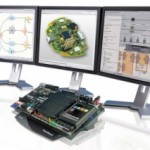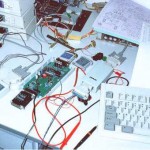Building prototypes of your product idea during the design process is naturally important and something that is a necessity for many reasons – including physical conceptualisation, demonstrations to possible financiers, proof of concept, usability testing in later stages, and project inspiration. However like all stages of the design process (as discussed last week) doing so requires a level of knowledge and expertise that not every organisation possess.
This is not a criticism, but should be taken as a positive observation. And like any skill – if you can’t do it properly yourself, find someone who can. Here at the LX Group we will take the time to understand your needs and ideas which can then be transformed into one or even a range of prototypes – setting you up for success. As part of this process a decision needs to be made with regards to the type of prototype required, so let’s examine them in more detail and the benefits of each.
Proof-of-concept prototypes
This is often a very basic example that will function in a similar manner to the final product – to prove that it is feasible and can be done. We say that the key purpose is to focus on, understand and address identified risk areas with the prototype. For example selecting an appropriate microcontroller to ensure processing speed and I/O requirements are adequate, or power consumption levels fall under a required maximum. During this level of prototyping it is important to remove design faults and technical risks otherwise the costs involved to make changes later on will be exponential compared to doing so now.
Demonstration prototypes
When you need to show someone what “it’s all about” – a demonstration prototype will be required. This is the model you shop around to potential investors and future customers, document or show during grant applications, and generally spruik to the outside world. Those of you in larger organisations may also require this to “sell” the concept to decision makers in the upper echelons of management. The prototype may not function as the final product, however it should appear to do so. For example the housing and cosmetic look will match the final product as much as possible, however embedded software may be very basic or “emulate” the required functions.
Research and Development prototype platforms
When you have the go-ahead to move forward with the project design, it’s time to get working on the design – which requires R&D prototypes. The algorithm development of the product can take place with these prototypes, and thus may not look like the finished product, but they will have the functionality and specified hardware to operate as one. Furthermore this type of prototype may be modified or altered during the research process to account for changes, updates and possible design changes.
Commercial Product Iterations
There are three iterations during this stage in the design process, including:
-
Alpha prototypes – these are the first revision of the design and generally meet all aspects of the product design. These will be used to test the design parameters, review the design and seek improvements, and seek internal suggestions and improvement ideas.
-
Beta prototypes – these will include any changes made during the alpha prototype stage, and be submitted for compliance testing, certification, stress testing and product trials. After the results of those operations more changes may be required to the design requirements and specifications.
-
Pre-production prototypes – these are manufactured during short runs and ideal for verifying the manufacturing process, component suppliers, determining production yields, product testing, and the supply chain. For more popular products security at all stages of the supply and manufacturing chain is vital to remove the possibility of information leaks, industrial espionage and intellectual-property theft. You don’t want fuzzy photos of your next great thing plastered over Internet pundit websites.
Where to from here?
Your project budget and prototype requirements will determine the method of creation and time required to do so. For many designs the speed of prototyping can be increased dramatically, in conjunction with reducing the budget requirement by using a mixture of standard components, development kits, a mixture of reference and custom designs and pre-designed hardware libraries. By not “reinventing the wheel” wherever necessary time and money can be saved without too much effort, leaving resources available for R&D or custom sections of the design.
So if you have an idea for a prototype and not sure about how to move forward and would like to have an experienced organisation take care of everything – we can “make it happen”. At the LX Group we have our own hardware compiler – a proven system of product design that will save you precious time and money. No matter what stage of design your team has achieved, we can partner with you to share our design and manufacturing expertise for your benefit.
To move forward with your prototype requirements, simply contact us for a confidential discussion about your ideas and how we can help bring them to life – click here to contact us, or telephone 1800 810 124.
LX is an award-winning electronics design company based in Sydney, Australia. LX services include full turnkey design, electronics, hardware, software and firmware design. LX specialises in embedded systems and wireless technologies design. https://lx-group.com.au
Published by LX Pty Ltd for itself and the LX Group of companies, including LX Design House, LX Solutions and LX Consulting, LX Innovations.




